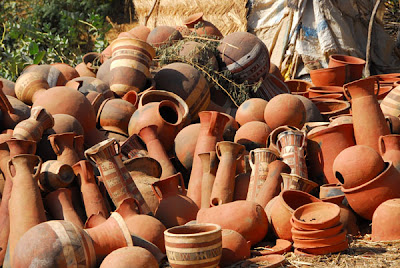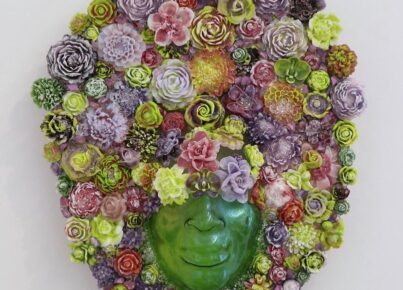Pottery has a long history in Africa and is one of the oldest arts. Pots are usually made by women. Though cheap and functional, African pots combine utility with great beauty. The procedure for making pots vary within the different communities that span the continent. The process of pottery making in Africa begins with the mining and preparation of the clay and mixing it with water.
Women Mining Clay
Women mining clay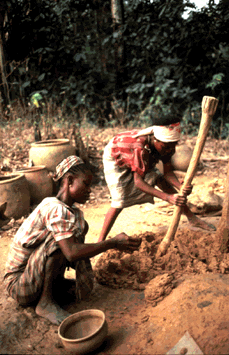
Photos by Prof. Christopher Roy
Clay Preparation
Temper or inert matter is then added to the clay mixture so as to reduce plasticity and to decrease shrinkage of pottery by replacing clay molecules, which contain water that shrink during drying and firing.
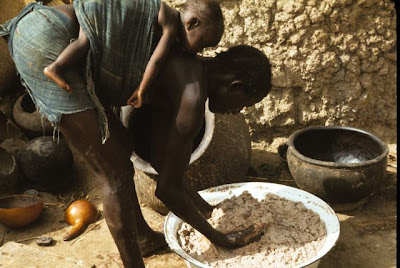
Temper includes finely chopped straw, dried animal dung pounded into a powder, and the chaff left when rice or millet is winnowed to prepare it for cooking, sand, river pebbles, shards of old pottery which have been reduced to a find powder. Tempers are kneaded into the fresh clay in amounts that vary. Generally, the result is a clay body with thirty to fifty percent temper material.
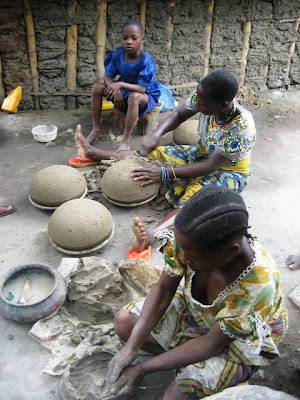

Starting with a mass of clay, most potters work by punching a hole in the center, and pulling the clay apart to give a vessel shape. Some flatten a clay shape over a convex mold and build up a vessel with coils. The potter’s wheel is uncommon in Africa. When they are ready for firing, a few large pots and many small ones are stacked together. Then they are wood fired for about three hours at relatively low temperatures. Some communities use pits and kilns.
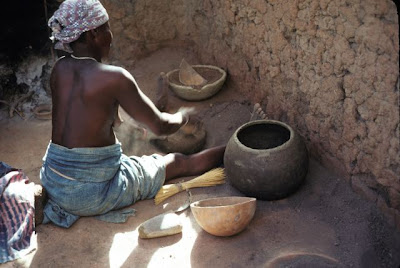


Pre-firing decoration is generally permanent and will survive handling and extensive use of the pot. In contrast, post-firing decoration, such as painting or colored washes, never becomes an integral part of the pot and will eventually wear off the surface.

Pre-firing decoration is applied at different stages in the drying process, after the completion of the basic shape of the pot and before the firing. Simple decorations include ones incised into the damp clay with a sharp blade or comb-like tool, impressed with a stamp made for example from split seed pods or shells, or rolled with a roulette made from a dried corn cob from which the kernels have been removed. Pre-firing also helps to drive the last molecules of absorbed water between the clay particles.
Here a potter of the Konate family in the village of Ouri in Burkina Faso prepares to fire large jars that will be used for brewing millet beer.

To pre-fire larger pots, they are turned rim downward on three large stones which keep them off the ground. A small fire is built beneath each pot to complete the drying process. When the pots are sufficiently dry, they are stacked with others for the final firing. The final firing must be begun before the pots have cooled from the pre-firing. If pottery is allowed to cool after the pre-firing, it will re-absorb moisture from the atmosphere and will crack during the final firing. Pre- firing is usually not necessary in the dry savanna where the lack of humidity permits more complete drying of the pottery before firing.
FIRING IN A KILN

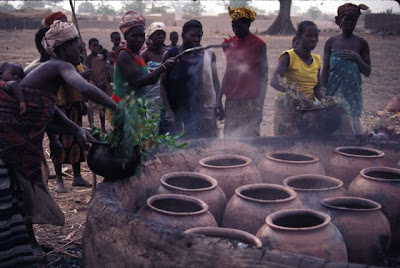
The kiln consists of a low, circular, mud brick wall, with pierced small holes on the base of the which provides air for the firing. Some kilns also have one or more larger holes that permit the addition of fuel during the course of the firing.
A thick layer of fuel is laid over the bottom of the kiln. Then, the dry pottery, interspersed with additional fuel, is piled on top which is then covered with large pieces of broken pottery that helps retain some heat and protect the pottery from direct contact with cool air. The kiln is lit from the bottom.
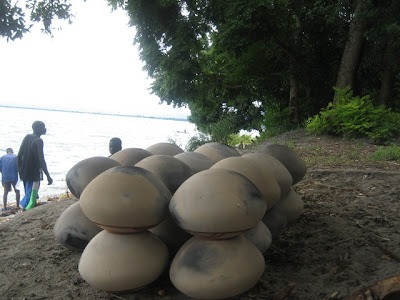
The duration of African firings is very short when compared to the technically complex and lengthy firings of European, American, and Oriental potters.
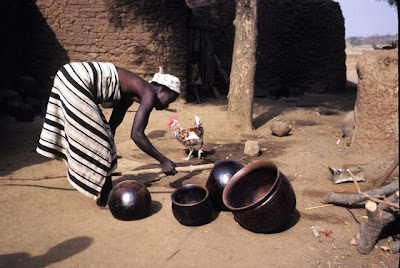
Once pottery has been fired its basic shape cannot be altered.
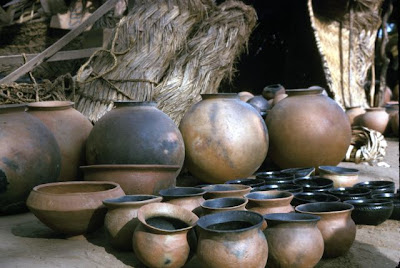



Source: saharanvibe.blogspot.com

